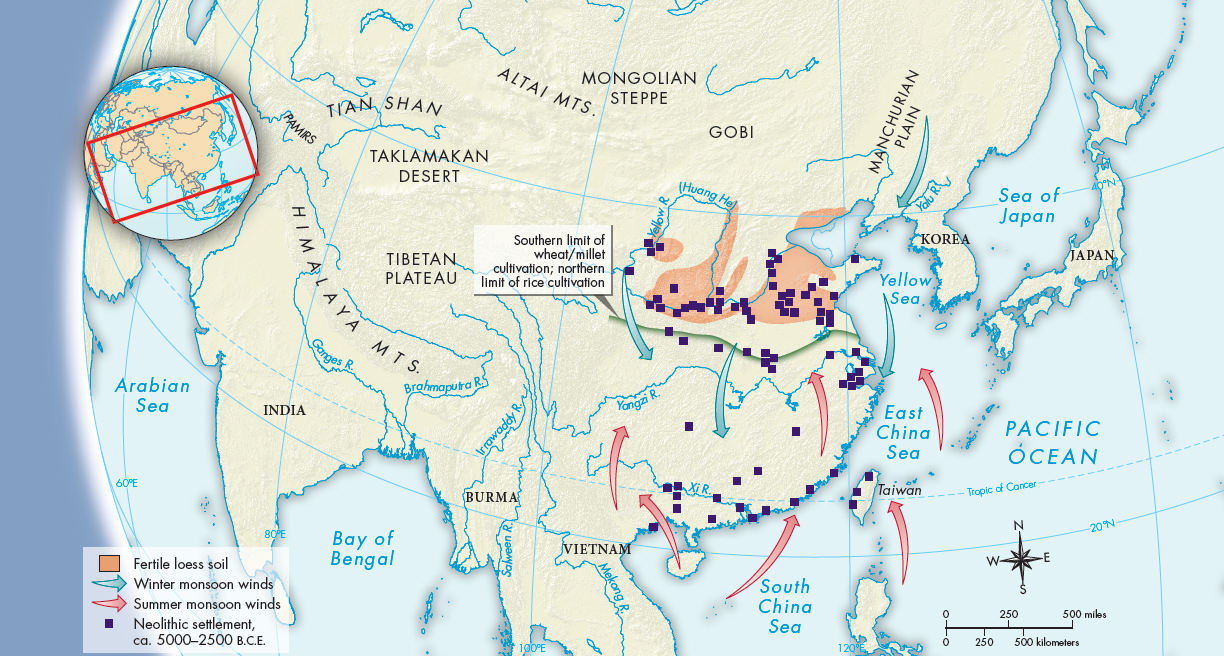A History of World Societies:
Printed Page 91
A History of World Societies Value
Edition: Printed Page 89
The Impact of Geography
As in most areas of the world, the geography of the region has had an impact on the development of Chinese civilization from ancient times to the present. China proper, about a thousand miles north to south and east to west, occupies much of the temperate zone of East Asia (Map 4.1). The northern part, drained by the Yellow River, is colder, flatter, and more arid than the south. Rainfall in many areas is less than twenty inches a year, making the land well suited to crops like wheat and millet. The dominant soil is loess — fine wind-

Mountains, deserts, and grasslands separated China proper from other early civilizations. Between China and India lay Tibet, with its vast mountain ranges and high plateaus. North of Tibet are great expanses of desert where nothing grows except in rare oases, and north of the desert, grasslands stretch from Ukraine to eastern Siberia. Chinese civilization did not spread into any of these Inner Asian regions, above all because they were not suited to growing crops. Inner Asia, where raising animals is a more productive use of land than planting crops, became the heartland of China’s traditional enemies, such as the nomadic tribes of the Xiongnu (SHUHNG-